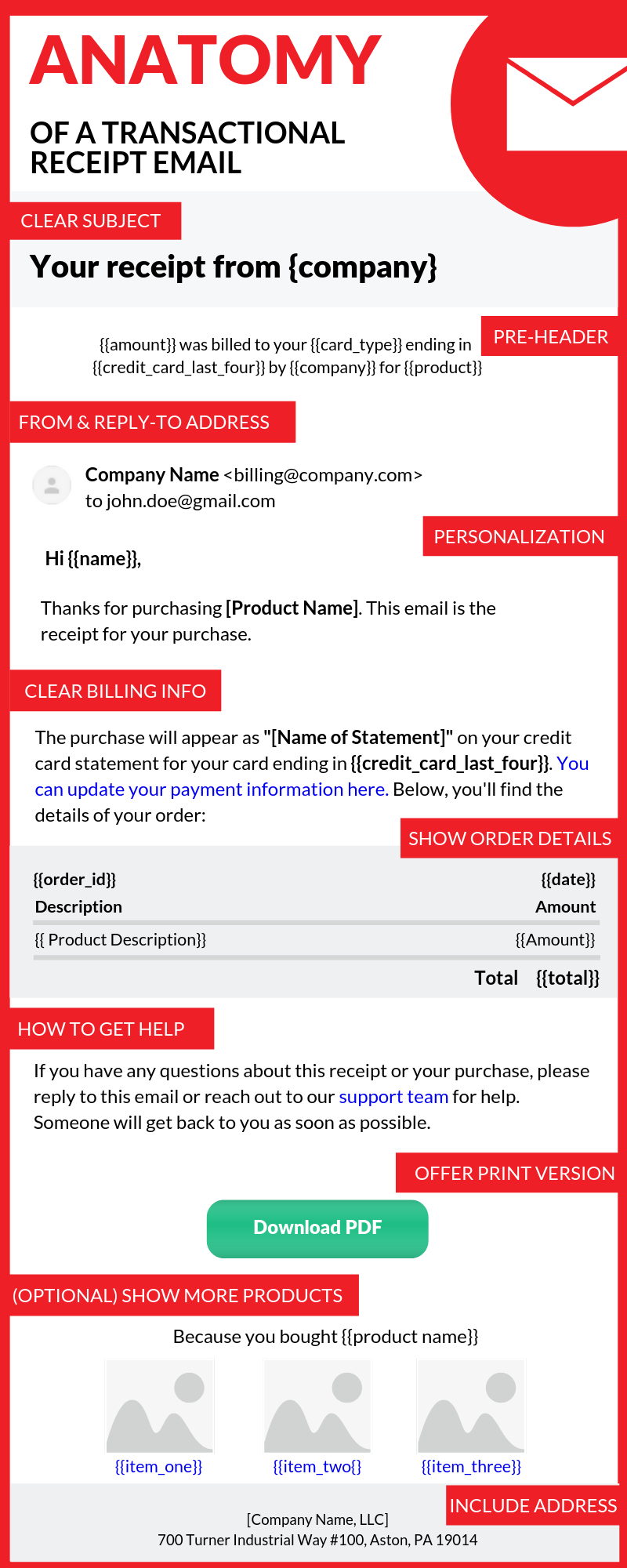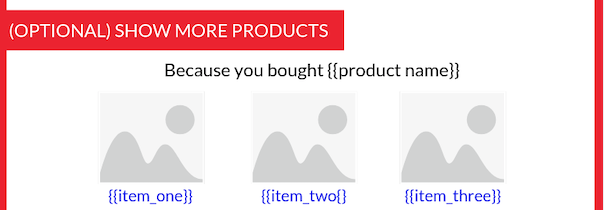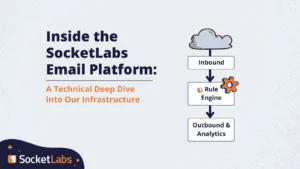Today we’re going to talk about effective transactional email design for email receipts. We’ll dissect every part of a good receipt email, so you understand its anatomy — but don’t worry, there won’t be any blood!
There are many types of transactional emails: password resets, shipping notifications, dunning alerts, and more. For this post, we’re going to focus strictly on transactional receipts.
Why receipt emails?
If you’re involved in any type of online business — whether selling physical products (ecommerce), charging access to software (SaaS), or delivering downloadable products to customers, receipts are almost guaranteed to be part of your business.
A poorly-designed receipt email will leave a bad impression (especially if the message lands in spam), cause customer service headaches, create unnecessary confusion and can even result in a loss of revenue.
On the other hand, a well-designed receipt email will reinforce the purchase decision, leave a good impression, avoid potential customer service issues down the road, and even generate additional revenue.
That’s why we’re going to show you the best transactional email design for receipt emails.
If you’re unsure about what transactional email is and how it’s different from marketing email, here’s some information about the differences between marketing and transactional email.
Otherwise, let’s scrub up and get ready to discuss the anatomy of a good transactional email.
Anatomy of an Effective Transactional Email Design
Here’s the anatomy of an effective transactional receipt email. Review this infographic, then we’ll break down each section in the lines below.

Now let’s discuss each part of the image in the lines below.
Transactional Email Subject Lines: Keep Them Clear and Readable

The subject in our example is:
Your receipt from {company}
This subject is short, meaningful, and to the point — exactly how a subject line should read.
When crafting your subject line, you need to strike a balance between providing enough information to properly inform the recipient, while not overloading this area with too much information. For example, including an order number will only make the subject line hard to read, resulting in confusion. You can offload some information into your pre-header area, which we’ll discuss below.
Utilize the Preheader and Make it Descriptive

The preheader area is the text right below the subject line.
And it’s another great place to identify the reason for the email, as we discuss in a recent blog post: Transactional Email Best Practices.
An effective transactional email receipt will include key information related to the transaction in the preheader area.
Many mailbox providers like Gmail, will even make the preheader text visible to the recipient without having to open the message.
What information should you include in the preheader?
Consider including transaction details that may not be appropriate for the subject. This includes details like amount paid, product names, card details, and company name.
Use a Clear ‘“From” and ‘Reply-to’ Address [Yes… Even for Email Receipts]

When sending any type of email, whether marketing or transactional — you’ll want to avoid causing confusion about who the email is coming from. One way to do this is by using a clear “From Address” in your email.
An example of a good from address is as simple as:
{Company Name} Billing <[email protected]>
Using your company name as the “From Address” will clearly identify to the recipient that you’re the one sending the email.
In addition to using a clear “From Address”, an effective transactional email will also use a “reply-to” address that accepts replies, meaning that it’s time to ditch that ‘no-reply’ address.
What’s a “no-reply” address?
A “no-reply” email address is a mailbox that is not monitored and blocks a customer’s response from reaching your inbox.
Many transactional senders justify using a “no-reply” address, explaining that, “the transactional receipt email contains nothing that people would want to respond to.” This, however, is the furthest thing from the truth.
Imagine that a customer has a problem or question about their receipt, what’s the first thing they are likely to do upon receiving the receipt email?
You guessed it — reply to the message.
When this happens, returning an error to your customer results in a poor customer experience.
That’s why you should think of your transactional emails as an extension of your customer experience. Ditch the “no-reply” email and start using a “reply-to” address in your receipt emails.
Personalize the Body Content of the Email

An effective transactional receipt design includes a degree of personalization in the body content of the email. In the example above, we personalized this email with the recipient’s name and we also identified the product that the customer purchased.
Showing the name of the product is not only a great way to personalize the message, but it also provides additional details to prevent against unnecessary confusion that could lead to a customer service issue.
So, how do you personalize a transactional email?
Most transactional email services, including SocketLabs, provide senders with the ability to personalize a transactional message using merge fields, which can be used with JSON, XML, or through an email designer.
Clarify How the Charge Will Look on the Credit Card Statement

Your transactional receipt email is a great opportunity to clarify how the charge will look on the customer’s credit card statement.
Why is being clear about how the charge will look on the credit card statement important?
With so many payment gateways and billing solutions, credit card statements can sometimes be hard to understand. Many payment processors use abbreviations for product names. It’s also common for statements to show a different company name than the name that the customer did business with. And even if your customer’s statement is clear, there’s a chance that they could completely forget that they made a purchase from you.
If a customer is confused by a charge, then it’s only a matter of time before the confusion leads to a chargeback.
An effective transactional email design for receipts provides additional information about how the charge will look on the customer’s statement.
- Tell the recipient exactly how your company name will appear on the statement
- Include the last four digits of the card used so the customer can easily associate the charge to the correct card statement
- If you’re selling a product on subscription, then include a link to an area where your customer can update their card information — this will help mitigate against churn, or loss of revenue in the future
Show Order Details so Your Customer Can Scan the Email

An effective transactional email design for receipts includes line item information, showing the specific details of the purchase.
Including line item information in your receipt emails accomplishes two things:
- 1) It allows your recipient to scan your transactional email to quickly understand the context of the message
- 2) Line item information gives your customers peace of mind that the transaction went through successfully and that everything looks good with a quick glance
Here are some ideas about what to include in your line item information:
- Order or receipt ID number
- Date of the transaction
- Product name with short description
- Amount paid for each product
- Total — sum of all products purchased
Tell Recipients How to Get Help

Let’s face it, mistakes happen in the business world.
And even if the mistake isn’t your fault, it’s always a good idea to maintain an open line of communication. It just so happens that your transactional email receipts are great for this.
That’s why any transactional email receipt should include a help area, which clearly states how to get help when needed. In our transactional example, we included the help section right below the line items.
Make it easy for your customers to get help by including links to your support pages, email address, and phone numbers. And if you’re not using a “no-reply” email, then let the customer know that they can get help by simply responding.
There’s also another benefit to including a help section in your receipts.
Even if your customer doesn’t need help, they may still use this area to provide feedback, which will help improve your service or product.
Offer a Print-Friendly Version of the Receipt Email

Most emails typically aren’t printed, so it may sound strange to include a print-friendly version of your transactional email receipt. However, when it comes to email receipts, it does make sense to include a print-friendly version.
This is because it’s common for email receipts (and invoices) to be printed frequently due to the role that email receipts play in the accounting process. This is especially true if you’re sending receipts related to B2B transactions.
An effective transactional email design will not only include a print-friendly PDF version of the receipt, but it will also clearly point out how to access the print version. In our example, we used a big green “Download PDF” button.
Help the Recipient With Relevant Content & Offers

After any purchase, there’s always an opportunity to help the customer with relevant content and offers, beyond the initial purchase. This will ultimately lead to more revenue. Here are three examples:
- 1) Offer related content: Related content can exist in the form of blog posts or guides. For example, if you sell running gear then you might provide links to content about training tips for runners.
- 2) Provide coupons or discounts: In addition to related content, you can also offer coupons or discounts in your transactional email receipts. This is a nice gesture that will surely incentivize more sales.
- 3) Suggest additional related products: Finally, consider suggesting related products to increase revenue. An e-commerce store selling dog grooming accessories may want to show more related accessories like shampoos, dog brushes, etc. A SaaS company can even use this section to sell related add-ons and feature upgrades to help the customer get more value from the product.
Keep in mind that whatever you’re offering, relevancy is key here. It’s a bad practice to offer content and products that are unrelated to the purchase.
With that said, the more promotional content that you include in your email, the more the lines between marketing and transactional email become blurry, so don’t get carried away.
It’s also important that you follow local email laws when adding promotional content to your email receipts. For example, the U.S. CAN-SPAM Act allows for some promotional content within transactional messages while other anti-spam laws outside of the U.S. strictly prohibit the use of promotional content in transactional emails.
Include Physical Address, Even Though an Address Isn’t Required

Last but not least, an effective transactional email design will also include a footer with a physical business address.
Here’s why:
The CAN-SPAM act requires every promotional email that is sent to include a physical address.
However, within CAN-SPAM there’s a stipulation that says that transactional or relationship messages (like receipts) do not need to follow CAN-SPAM requirements.
Even though you’re not legally required to include a physical address in the footer of your transactional email, it’s still usually in your best interest to include your physical address.
It’s so common to see an address at the bottom of an email, that recipients could easily mistake your message as spam if they don’t see a physical location. Spam complaints will tarnish your reputation, ultimately hurting your deliverability — therefore, it’s better to be safe than sorry.
The Behind the Scenes Stuff [Authentication]
Finally, there’s one more element to effective transactional email design that we didn’t include in our infographic because it’s a bit harder to show.
It’s authentication and it’s extremely important when sending transactional emails.
Authentication looks something like this:

Technically speaking, it’s included in every email for your recipients to find, but most of your recipients won’t know where to find it since this code is buried deep within the header files of your email.
Since receipt emails are time-critical and always important, you don’t want to ignore security standards that will protect your brand and provide deliverability benefits.
Here are the three areas of authentication that you should focus on:
- Setup SPF Records: An SPF-protected domain tends to be less attractive to malicious individuals and therefore less likely to be delivered to the spam folder.
- Sign Your Emails With DKIM: DKIM defends against malicious modification of your email message in transit by ensuring that the message that arrived in your recipient’s inbox was not altered in transit. Try SocketLabs’ free DKIM Generator Tool to try formatting your public and private keys.
- Set a DMARC Policy: DMARC gives senders the ability to instruct mailbox providers on how to handle unauthenticated mail via a DMARC policy.
You can also now try our free DMARC Generator to help you simplify generating a valid DMARC policy for your domain.
By setting up security protocols like SPF, DKIM, and DMARC you’re sending additional trust signals to mailbox providers that your transactional email is in fact coming from you, and not being spoofed by someone else, which is an important factor to achieving successful transactional email deliverability.
That wraps up our post about the anatomy of an effective transactional email design.
You successfully dissected every element of a good receipt email without getting any blood on your hands. Congrats!
If you’re looking to send transactional email receipts, here’s where you can learn more about the SocketLabs transactional email service.








